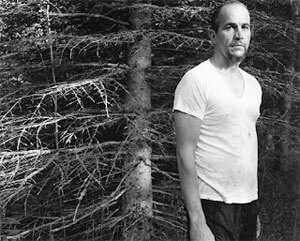Philip-Lorca diCorcia (born 1951) is an American photographer. He studied at the School of the Museum of Fine Arts, Boston. Afterwards diCorcia attended Yale University where he received a Master of Fine Arts in Photography in 1979. He now lives and works in New York, and teaches at Yale University in New Haven, Connecticut. diCorcia's work has been exhibited in group shows in both the United States and Europe since 1977 , he participated in the traveling exhibition Pleasures and Terrors of Domestic Comfort, organized by New York's MOMA in 1991. His work was also featured in the 1997 Whitney Biennial at the Whitney Museum of American Art, and, in the 2003 exposition Cruel and Tender at London's Tate Modern. The following year diCorcia’s work was included in Fashioning Fiction in Photography Since 1990 at the MOMA. His most recent series was seen in the Carnegie Museum of Art’s 54th Carnegie International exhibition in Pittsburgh, Pennsylvania. He has also exhibited in Germany (Essen), Spain (Salamanca) and Sweden (Stockholm)[citation needed]. diCorcia received his first solo show in 1985 and from then on he has been featured in one-person exhibitions worldwide, including those at New York's Museum of Modern Art; Paris' Centre National de la Photographie; London's Whitechapel Art Gallery; Madrid's Museo Nacional Centro de Arte Reina Sofía; Tokyo's Art Space Ginza; and Hannover's Sprengel Museum. In March 2009, David Zwirner in New York held an exhibition of one thousand actual-size reproductions of diCorcia's Polaroids, entitled Thousand. Sprüth Magers London showed a series of Philip-Lorca diCorcia's Polaroids in 2011. DiCorcia alternates between informal snapshots and iconic quality staged compositions that often have a baroque theatricality. Using a carefully planned staging, he takes everyday occurrences beyond the realm of banality, trying to inspire in his picture's spectators an awareness of the psychology and emotion contained in real-life situations. His work could be described as documentary photography mixed with the fictional world of cinema and advertising, which creates a powerful link between reality, fantasy and desire. During the late 1970s, during diCorcia's early career, he used to situate his friends and family within fictional interior tableaus, that would make the viewer think that the pictures were spontaneous shots of someone's everyday life, when they were in fact carefully staged and planned in beforehand. He would later start photographing random people in urban spaces all around the world. When in Berlin, Calcutta, Hollywood, New York, Rome and Tokyo, he would often hide lights in the pavement, which would illuminate a random subject in a special way, often isolating them from the other people in the street. His photographs would then give a sense of heightened drama to the passers-by accidental poses, unintended movements and insignificant facial expressions. Even if sometimes the subject appears to be completely detached to the world around him, diCorcia has often used the city of the subject's name as the title of the photo, placing the passers-by back into the city's anonymity. Each of his series, Hustlers, Streetwork, Heads, A Storybook Life, and Lucky Thirteen, can be considered progressive explorations of diCorcia’s formal and conceptual fields of interest. Besides his family, associates and random people he has also photographed personas already theatrically enlarged by their life choices, such as the pole dancers in his latest series. His pictures have black humor within them, and have been described as "Rorschach-like", since they can have a different interpretation depending on the viewer. As they are planned beforehand, diCorcia often plants in his concepts issues like the marketing of reality, the commodification of identity, art, and morality.
Source: Wikipedia
Philip-Lorca diCorcia is among the most influential and innovative photographers of the past thirty years. Bringing together 125 photographs made from the late-1970s to the present, including selections from all of his distinct series, this exhibition is the first comprehensive survey of diCorcia's work in the United States. DiCorcia's images perch on the lines between fact and fiction, blending a documentary mode with techniques of staged photography. The viewer is often unsure whether a scene has been found or posed by diCorcia, which lends an uncanny quality to the typically mundane imagery the artist presents. Ultimately, his work asks viewers to question the assumed truth of a photograph and to consider alternative ways that images might speak to and represent reality. In the mid-1970s, DiCorcia (born 1951 in Hartford, Connecticut) attended the School of the Museum of Fine Arts, Boston, followed by a Masters of Fine Art in Photography at Yale University. From the very beginning, he pursued a middle ground between two major photographic modes of the period. A modernist documentary style influenced by Walker Evans, Garry Winogrand, and Diane Arbus is evident, but so too is an approach informed by conceptual art, which mobilizes images as cultural archetypes or signs. In all his work, diCorcia captures moments that seem arrested in the chaotic flux of the larger world. From the psychological tension of his staged tableaux to his portraits of pedestrians on city streets to his experimental narrative sequence A Storybook Life, the ultimate effect of diCorcia's photographs is a sense of reality hanging in a threshold, uncertain, unstable, and poetic.
Source: www.icaboston.org
